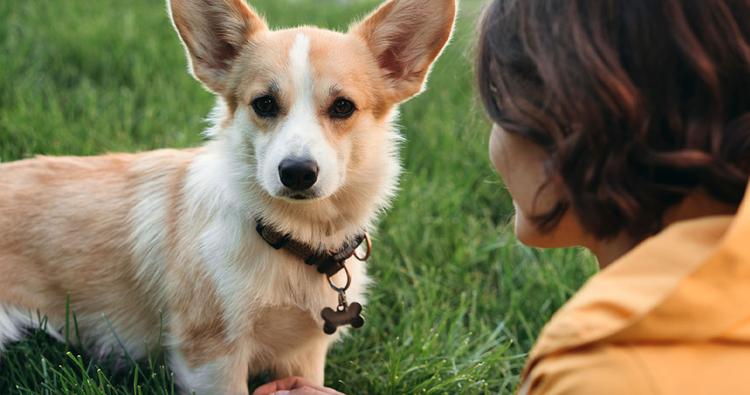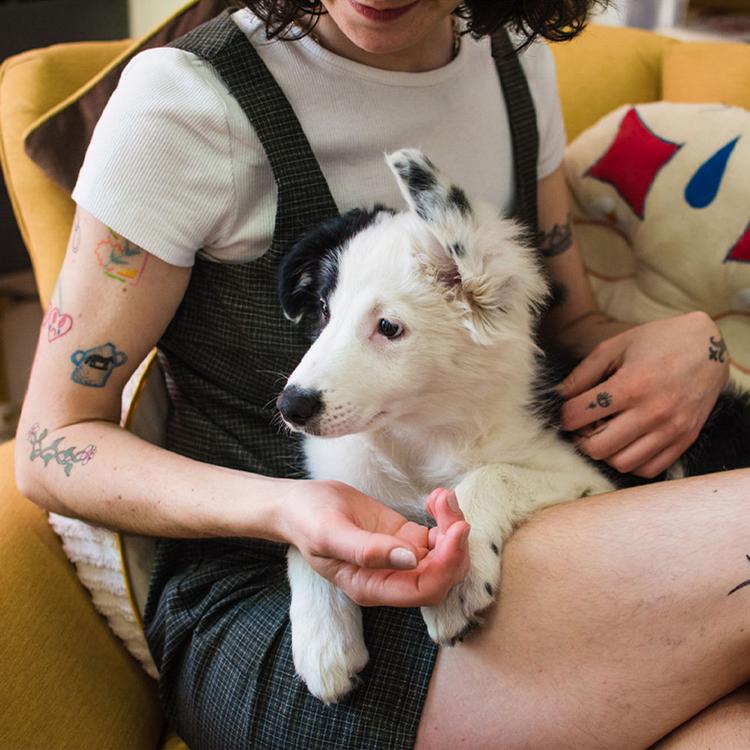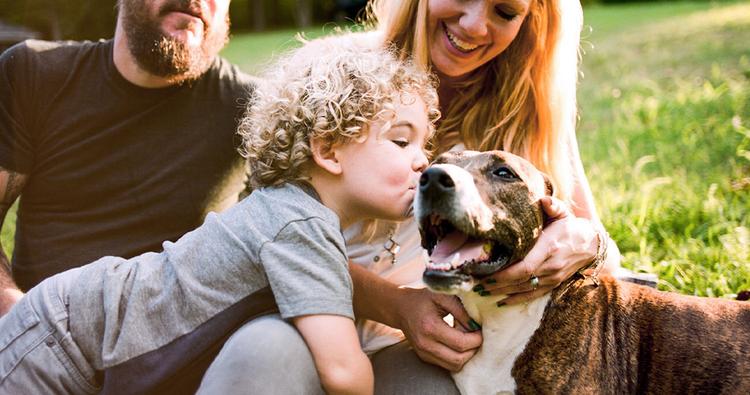What to Know Before Adopting an Abused or Neglected Dog
Adopting a dog with a difficult past doesn’t have to be a deal-breaker. Here’s how you can help them thrive in their new home.
Adopting a dog with a difficult past doesn’t have to be a deal-breaker. Here’s how you can help them thrive in their new home.
by Katie Koschalk, | June 20, 2024

Yanya / Shutterstock
Adopting a dog with a history of abuse or neglect can be life-changing, both for the animal and their new pet parent. While these animals can come with a unique set of challenges, they are rarely insurmountable. The way to surmount these obstacles is by understanding the complexities and responsibilities you’ll face, as well as how you can most effectively help put a dog on the path to healing.
Read on for all the tips you’ll need to understand to help these dogs in need. With some effort on your part, you’ll be showered with love and companionship from your appreciative pup.
Many dogs who come into shelters have unknown histories, and unfortunately, dogs can’t tell us about their past or seek out a good therapist to help them process it in the same ways we do our trauma. So, it’s up to humans to recognize the signs of abuse or neglect in dogs and help them heal.
While each dog reacts differently to mistreatment, the following behaviors and physical indicators are commonly observed in abused or neglected animals:
Cowering
Trembling
Tucked tail
Hiding when approached
Withdrawal
Hypervigilance
Destructive behavior
Depression
Lack of trust
Scars and injuries
Malnutrition
Poor hygiene (matted fur, overgrown nails, dental issues, etc.)
Parasites and infections
Aggression
Important caveat: Just because your newly adopted dog behaves a certain way or displays a set of behaviors doesn’t mean they were abused or neglected.
“There are a lot of factors that contribute to a dog’s behavior, such as genetics, maternal stress during pregnancy, parental disposition, personality, socialization history, current environment, and much more,” says Rachel Lane, certified professional dog trainer and founder of Leash and Learn in New York City.
Adopting a pet with a history of abuse or neglect can be a really great thing. It helps an animal in need, reduces shelter overpopulation, and gives you a best friend with whom to explore or just lounge around.
They can also come with unique — but definitely not insurmountable — challenges that potential adopters should anticipate. Assisting an abused dog in their journey to adjust and heal requires a well-rounded, compassionate approach. Here are some effective tactics to help your new pet settle in and feel safe in the world.
Patience is paramount when helping an abused pet adjust and heal. “It’s very hard for us when we want to cuddle our new dog and tell them it’s going to be OK,” says Nicole Kohanski, founder and head trainer at Wiggle Butt Academy in Frisco, Texas. Resist this temptation. “Space and some decompression time sends the clearest message that the new environment is a safe one.”
It’s also important to note that recovery from trauma is often not a linear process — it can involve setbacks. Being patient means allowing your dog to adjust at their own pace and choose how close to you they want to be, Kohanski says.
You should use positive reinforcement to help your dog get used to your presence. “A great tip is to toss a treat near your pup when you walk by,” Kohanski says. This helps your dog associate you approaching them with good things.
Dogs who were previously abused will frequently exhibit trust issues and fear of humans or other animals. They may cower, hide, react aggressively, excessively bark, or demonstrate destructive behavior. If they do, take a deep breath, and don’t panic. These are normal behaviors for dogs who come from traumatic situations and can soften as they adapt to you and their new surroundings.
“Dogs manifest fear in a variety of ways, and it can change in different situations or as an interaction is progressing,” Lane says. “It can be hard to know how a dog will respond in any given situation until you try it out.” Take things slow and be observant, vigilant, adaptable, and ready to intervene when needed.
“When we’re excited about a dog, we can often approach a dog in ways that may seem threatening — fast approaches, erratic movements, big arm gestures, toothy grins, and direct eye contact may be scary,” Kohanski says. Instead, she suggests keeping your movements slow and calm and avoiding direct eye contact.
Children can be particularly intimidating for a formerly abused pet, Kohanski adds. Teach your kids to empathize with their new pup and interact calmly with them.
While many shelter dogs are perfectly healthy, dogs who have suffered abuse or neglect may come with health issues due to their past mistreatment. These issues might include malnutrition, dental problems, injuries, and chronic conditions.
Fortunately, dogs typically receive a veterinary assessment and treatment (if needed) upon arrival at a shelter. Still, it’s important to take your pup to a veterinarian for an evaluation shortly after adoption to establish care. If any health conditions are present, following the vet’s treatment plan is crucial for the wellbeing of your new pet. Be sure to budget accordingly to account for these potential costs.
Creating a stable environment with a consistent daily routine is crucial for a formerly abused dog. Regular feeding times, walks, and bedtime routines provide a sense of safety and help them understand what to expect, reducing stress and fear.
Lane strongly advises against using punishment, scolding, or fear to enforce rules or boundaries. Instead, reward desirable behavior with praise and treats, and calmly redirect undesirable behavior. This positive-reinforcement approach is the most effective way to train and build trust with your new pet.
Gradual socialization is important to help an abused pet become more comfortable with new people, animals, and environments. Start with controlled, low-stress situations, like having a friend over to your home, and slowly increase exposure to new things as your pet becomes more confident. Reward positive interactions and experiences with praise and a treat to create favorable associations.
In some cases, hiring a professional dog trainer can be a good option for you. “Getting started on the right foot can make a world of difference down the road,” Lane says. “It can help prevent undesirable behaviors from developing, and it can help resolve undesirable behaviors faster.”
Professionals can tailor plans to address your pet’s specific needs and help you implement effective rehabilitation strategies. Qualified professionals can be found on the CCPDT or IAABC websites.
When adopting a pet with a history of abuse, certain factors related to their age and past experiences can influence their rehabilitation process. No situation is hopeless — some just require more patience and time than others.
Adult dogs with a history of trauma may require more patience, as they’ve had more time to become set in their ways compared to puppies. While this can make helping an adult dog acclimate more challenging, it’s certainly doable with positive reinforcement and consistency.
Older dogs are more likely to have age-related health issues or conditions resulting from neglect or abuse, making regular veterinary check-ups essential. It’s also important to ensure older dogs have easy access to food, water, and sleeping areas, which can help them feel more at ease.
Dogs from puppy mills may have had limited interaction with humans, animals, and different environments, making socialization a crucial aspect of their rehabilitation. These dogs may also have untreated medical conditions or physical issues resulting from overbreeding, so a prompt veterinary evaluation is vital.
Adopting a dog isn’t for impatient or ill-prepared pet parents, but it can be an incredibly gratifying experience, both for the animal and you. As you provide them with the love, care, and patience they need, you’ll see them gradually overcome their fears, build trust, and develop a sense of security. Each small milestone, whether it’s the first time they wag their tail or confidently approach you for affection, is a testament to their resilience and your dedication.
In helping an abused pet heal, you’re not only giving them a second chance at happiness but also enriching your life with the joy and fulfillment that comes from helping a vulnerable animal thrive. The bond that forms through the recovery journey is often deep and unique, filled with mutual gratitude and affection.
To prepare for dog adoption, ensure your home is safe and dog-friendly. Gather essential supplies like food, bowls, a bed, toys, and a leash. Research training methods and consider enrolling your pup in a training class.
You can adopt a dog from local animal shelters, rescue organizations, and humane societies. Just be sure to choose a reputable organization. You can also search for dogs using online pet databases like Adopt a Pet.
If you adopted an abused breed dog, and they never bark, it’s possible that the dog was previously punished when they barked and learned it was safer to keep quiet. It’s also possible that the dog underwent an unethical surgical procedure called debarking or devocalization.
If you’re ready for a dog, check out Adopt a Pet’s online search feature to find your new family member today.
Adopting an Abused Dog (How to Prepare & Steps to Take)
Animal Cruelty Caring for a Dog with PTSD
Identifying Signs of Animal Abuse

Katie Koschalk is a freelance writer based in Northern California. Fusing her love and knowledge of animals with her journalism degree and years of professional writing, Katie is dedicated to improving the lives of pets and their caretakers by sharing helpful and accurate information. When she’s not at her desk, you can find her exploring trails with her Aussie, Hunter, cooking plant-based meals, and talking to her two cats, Jax and Sadie, in really ridiculous voices.

Adoption Advice

Adoption Advice

Adoption Advice

Adoption Advice
Learn what a rescue dog is and why these pups make the best buddies.

Adoption Advice
Preparing for a new puppy? Learn how to puppy proof your home and create a safe environment for your new puppies first days at home.

Adoption Advice
Learn about rescue dog transport — a vital process relocating adoptable pets from overcrowded shelters to areas where they’re eagerly welcomed.

Adoption Advice
Thinking of adopting a dog? Learn more about the average monthly costs of dog parenthood.

Adoption Advice
Preparing for a new puppy with kids? Read our guide for insights on creating a harmonious bond between your children and new puppy.

Adoption Advice
Considering dog adoption? Learn the differences between adult dog and puppy adoption to find your perfect match.

Adoption Advice
Getting ready to adopt a new puppy? Download our guide to help you prepare for the arrival and first few months with your new puppy

Adoption Advice
Are you new to dog adoption? We’ve got you covered with this comprehensive checklist. It’s everything a first-time pet parent needs to prepare for their new pup.

Adoption Advice
Did you just bring home an adorable puppy?